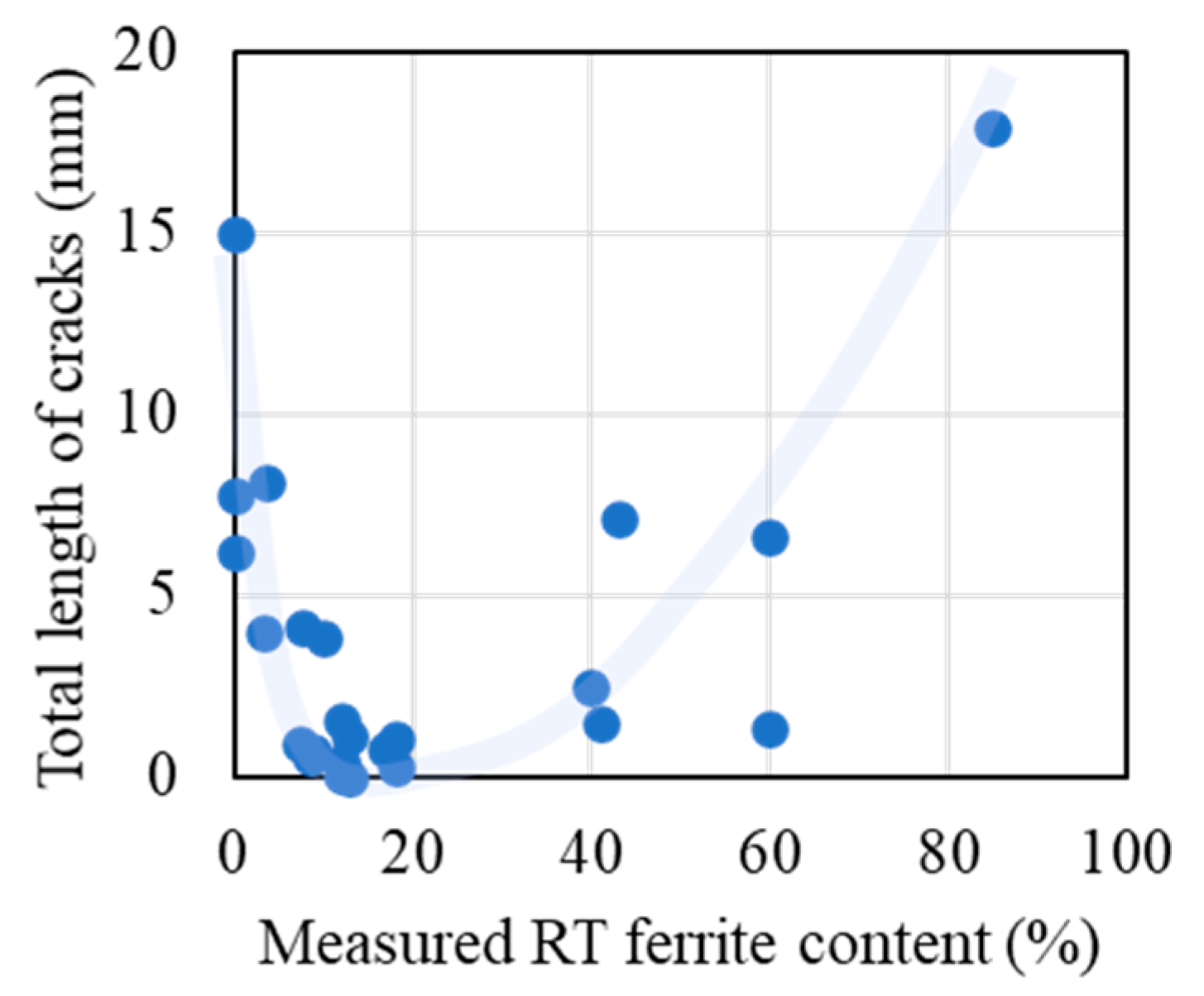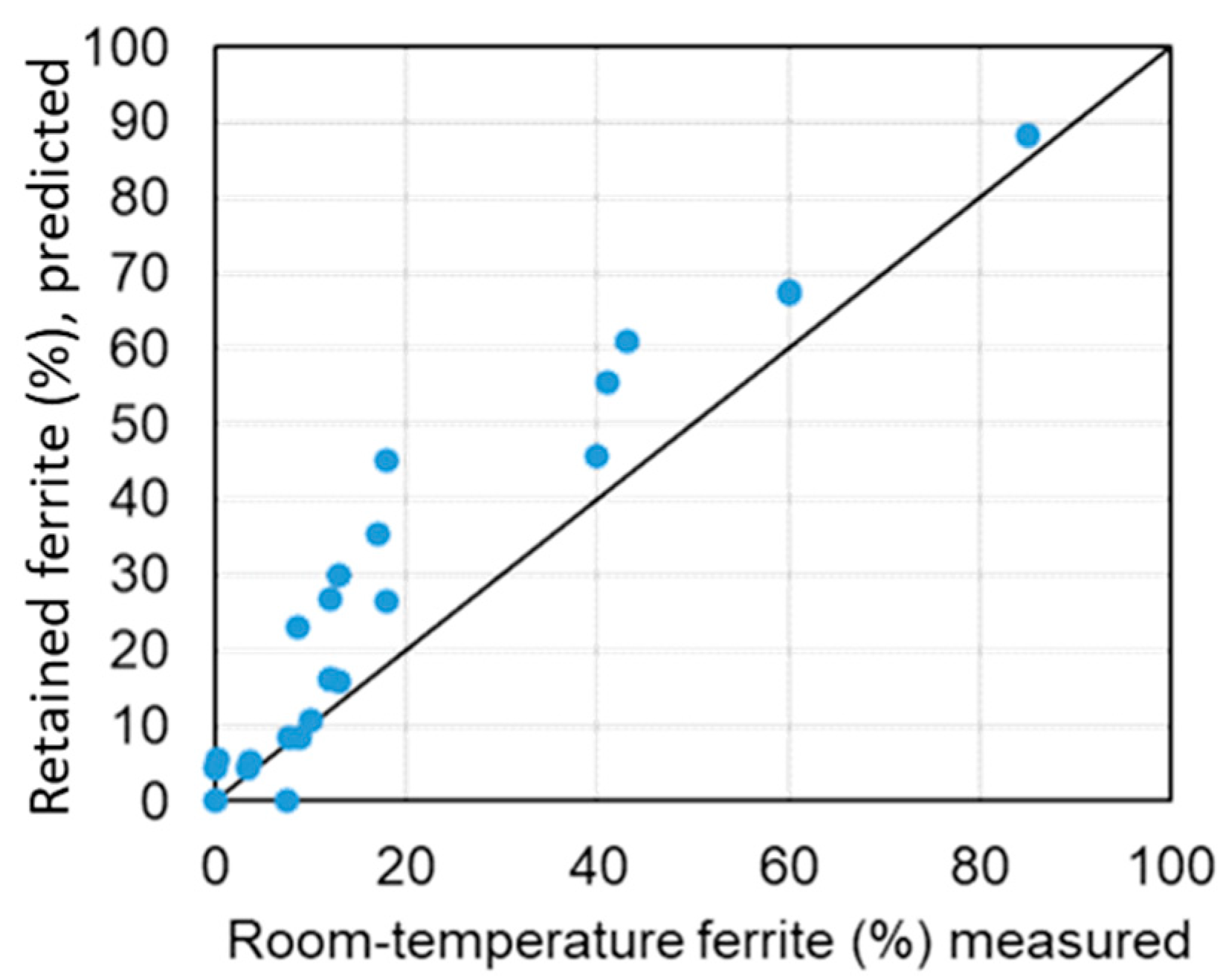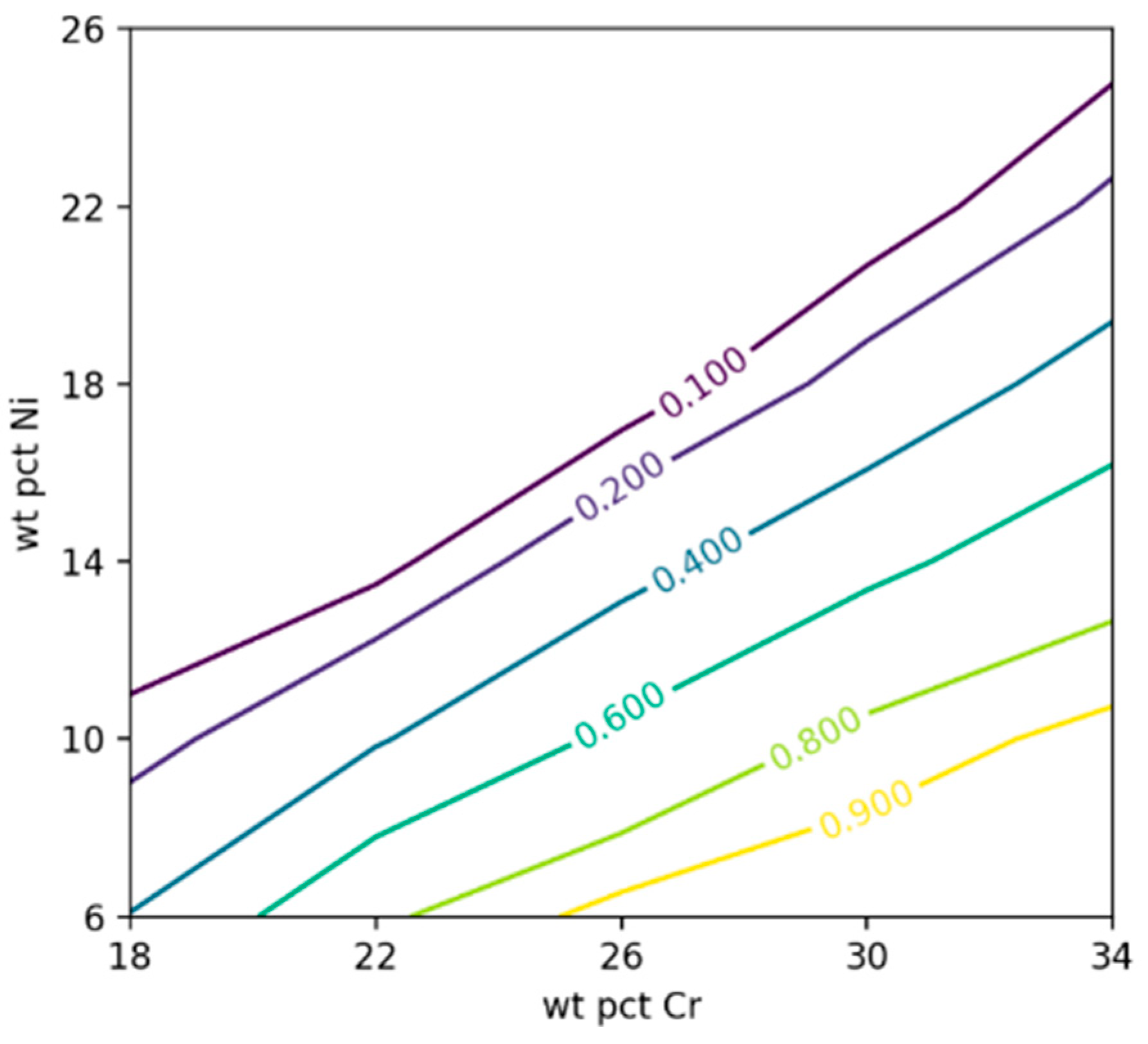Understanding Hot Cracking of Steels during Rapid Solidification: An ICME Approach †
Abstract
:1. Introduction
2. Methods
3. Results and Discussions
3.1. Hot Cracking Susceptibility (HCS)
3.2. δ-Solidification
3.3. ICME-Guided Materials Design
4. Conclusions
Author Contributions
References
- Shankar, V.; Gill, T.P.S.; Mannan, S.L.; Sundaresan, S. Solidification cracking in austenitic stainless steel welds. Sādhanā 2003, 28, 359–382. [Google Scholar] [CrossRef]
- Clyne, T.W.; Davies, G.J. The influence of composition on solidification cracking susceptibility in binary alloy systems. Br. Foundrym. 1981, 74, 65–73. [Google Scholar]
- Yan, X.; Lin, J.C. Prediction of Hot Tearing Tendency for Multicomponent Aluminum Alloys. Metall. Mater. Trans. B 2006, 37, 913–918. [Google Scholar] [CrossRef]
- Kujanpää, V.; Suutala, N.; Takalo, T.; Moisio, T. Correlation between solidification cracking and microstructure in austenitic and austenitic-ferritic stainless steel welds. Weld. Res. Int. 1979, 9, 55–76. [Google Scholar]
- Andersson, J.O.; Helander, T.; Höglund, L.; Shi, P.F.; Sundman, B. Thermo-Calc and DICTRA, Computational tools for materials science. Calphad 2002, 26, 273–312. [Google Scholar] [CrossRef]
- Thermo-Calc Software. TCFE Steels/Fe-Alloys Database Version 10.1. Available online: www.thermocalc.com (accessed on 23 January 2021).
- Thermo-Calc Software. MOBFE Steels/Fe-Alloys Mobility Database Version 5. Available online: www.thermocalc.com (accessed on 23 January 2021).
- Tamaki, K.; Kawakami, H.; Suzuki, J. Effects of carbon content and peritectic reaction on hot cracking of high-carbon steel weld metal. Weld. Int. 2003, 17, 26–35. [Google Scholar] [CrossRef]
- Berglund, I. Development of alloys for additive manufacturing using the Materials by Design™ methodology. In Proceedings of the Alloys for Additive Manufacturing Symposium (AAMS), Sheffield, UK, 3–4 September 2018. [Google Scholar]






Publisher’s Note: MDPI stays neutral with regard to jurisdictional claims in published maps and institutional affiliations. |
© 2021 by the authors. Licensee MDPI, Basel, Switzerland. This article is an open access article distributed under the terms and conditions of the Creative Commons Attribution (CC BY) license (https://creativecommons.org/licenses/by/4.0/).
Share and Cite
Yan, F.; Yan, J.; Linder, D. Understanding Hot Cracking of Steels during Rapid Solidification: An ICME Approach. Mater. Proc. 2021, 3, 30. https://doi.org/10.3390/IEC2M-09254
Yan F, Yan J, Linder D. Understanding Hot Cracking of Steels during Rapid Solidification: An ICME Approach. Materials Proceedings. 2021; 3(1):30. https://doi.org/10.3390/IEC2M-09254
Chicago/Turabian StyleYan, Fuyao, Jiayi Yan, and David Linder. 2021. "Understanding Hot Cracking of Steels during Rapid Solidification: An ICME Approach" Materials Proceedings 3, no. 1: 30. https://doi.org/10.3390/IEC2M-09254
APA StyleYan, F., Yan, J., & Linder, D. (2021). Understanding Hot Cracking of Steels during Rapid Solidification: An ICME Approach. Materials Proceedings, 3(1), 30. https://doi.org/10.3390/IEC2M-09254





